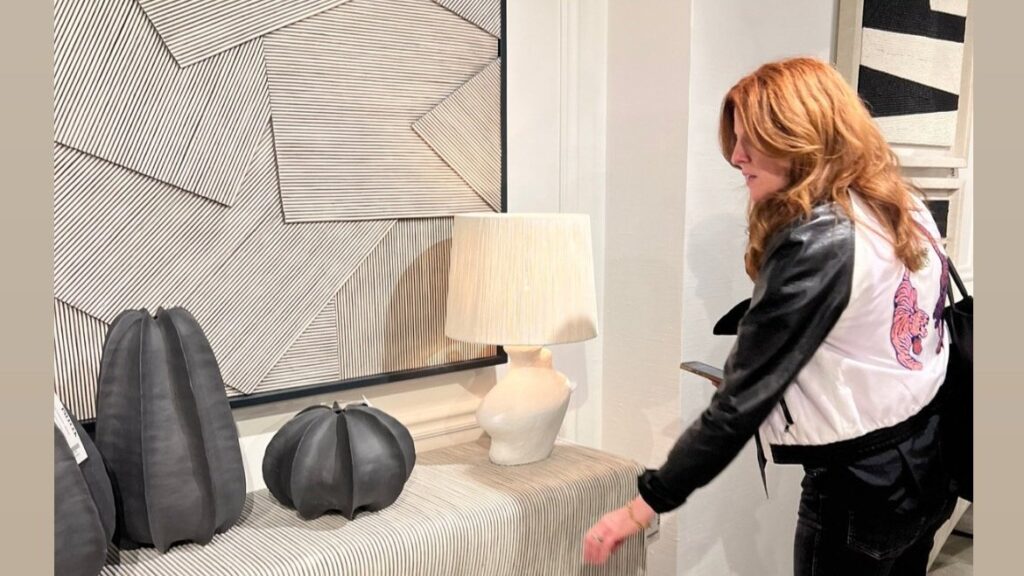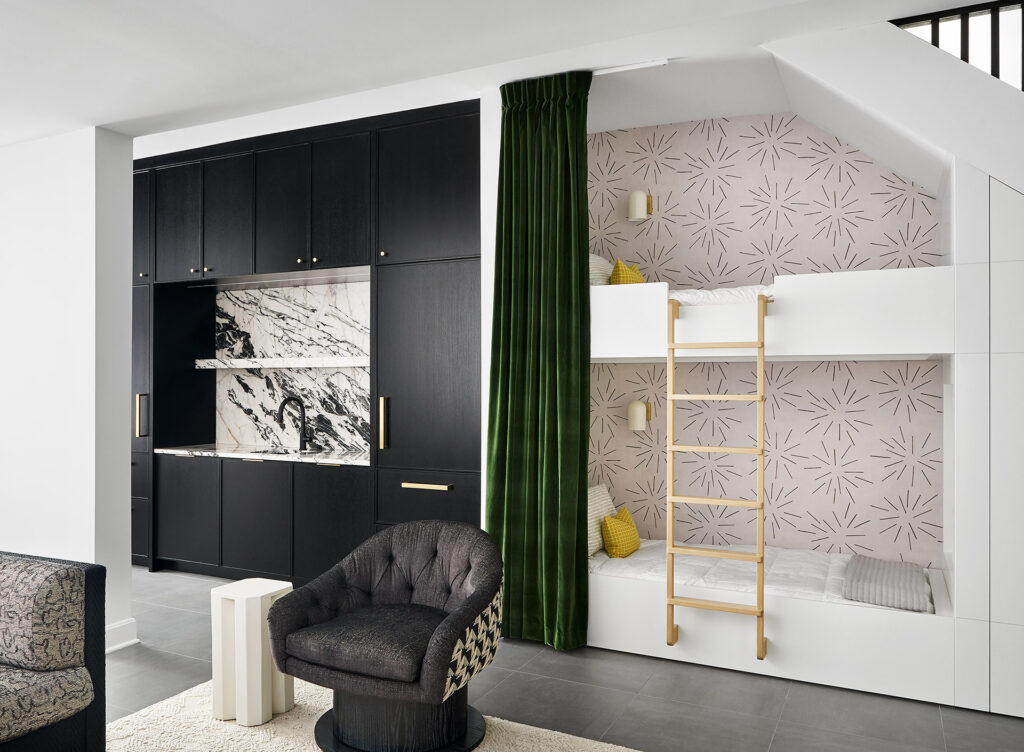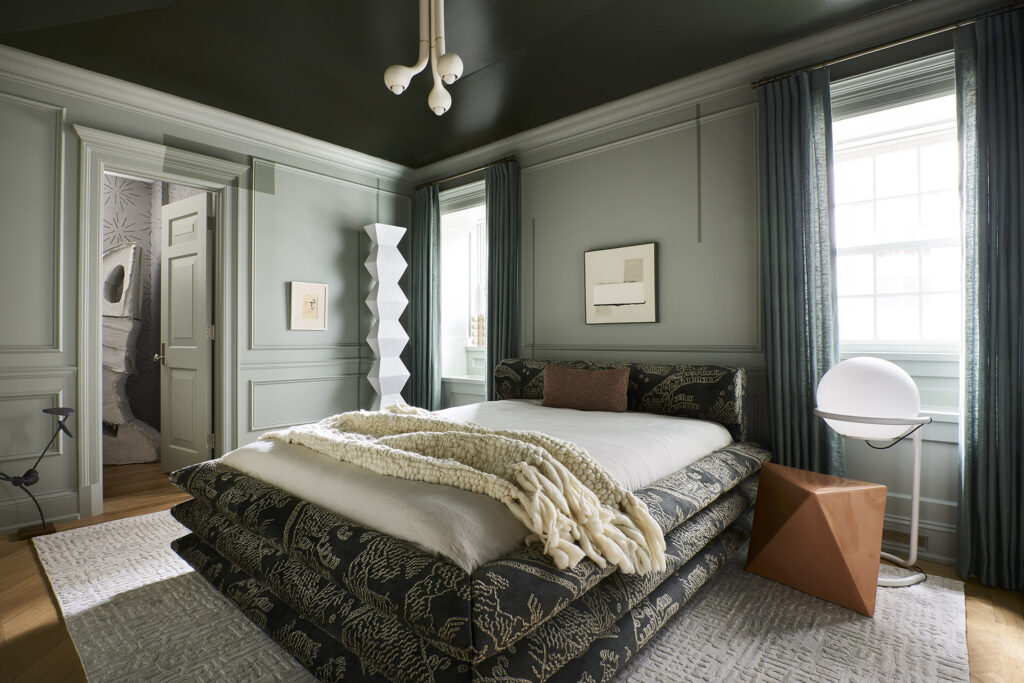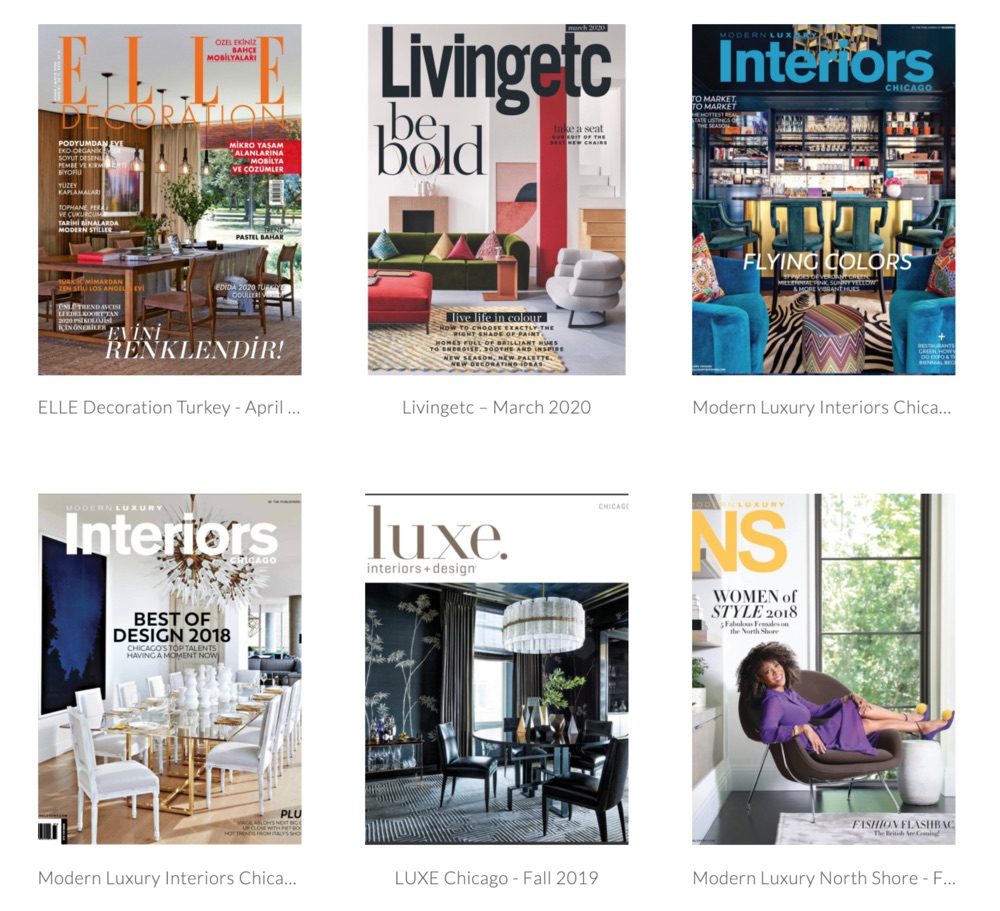
Many interior design firm owners and are often the accounting, marketing and advertising departments, as well as the design departments. It can be challenging to juggle the demands of a small business and set aside time to get your work in front of a publisher. The process is not as hard as it may seem. For the last 15 years, I have secured all my own press by a bit of research, networking and preplanning. There are simple steps you can do to get you there. Ok, here we go.
The best investment you can make in your business is photographing the work. In my former life as an adjunct professor for SAIC teaching installation art, I told my students the documentation was even more important than the work itself. If only, let’s say, 300 people come through the gallery during the exhibition, only those few people experienced the work. If the work is not captured, it’s like it never existed and all the hard work was for nothing. The same rule applies here.
The only representation of your work is in photographs- so make them count. It’s critical to tell a visual story in the photos, meaning capture moments or an essence of the space as well as the overall shots. Include not just over all room shots, but close ups details and 3/4 shots. Think about the photo shoot as an opportunity to capture images for social media too. Vignettes, tablescapes, and close ups or details of the space are great for social media. I have even hired two photographers for the day, one focusing on overall room shots and the other focused on IG specific shots with the proper format.
1. Photography
Hire a professional. You will not be taken seriously by editors unless you submit really beautiful shots of each space that are thoughtfully styled. Poor lighting makes you look like an amateur and editors can tell the difference if it was professionally shot, just by proper lighting. They will pass immediately. Here are a couple examples of poorly lit spaces:
Examples of properly lit spaces:
I typically send a shot list so the photographers can plan on what lights they need, etc. It also sets the expectations for the day and ensures you get everything you need. I get really excited on photo shoot days and unless I write down my list out ahead of time, I have gotten caught up in the excitement and forgotten some the shots I wanted and am disappointed later. I will also plan out each shot in my head and think through what items I need to bring with me the day of for the best styled shot. I literally obsess over each shot and invest in extra pillows accessories, etc. to get THE BEST shot possible. If I am going to invest in the cost of the photographer, I want to make sure every shot is perfect. Often times clients will purchase extra items after they see how amazing it can look. Hire a stylist if this is not your strong suit. Again, the more effort put in preparing for the photo shoot the better results, and better return on your investment.
I will also send a PDF of the space (even if not completely styled) so the photographer can see what the natural light will be like and anticipate anything they may need day of. I like to set my team up for success as much as possible, and photographers I have worked with always appreciate a preview so they know what to expect.
All floor, ceiling and pendant lights in the photo should normally be turned off. This is a dead giveaway the photograph was not professional.
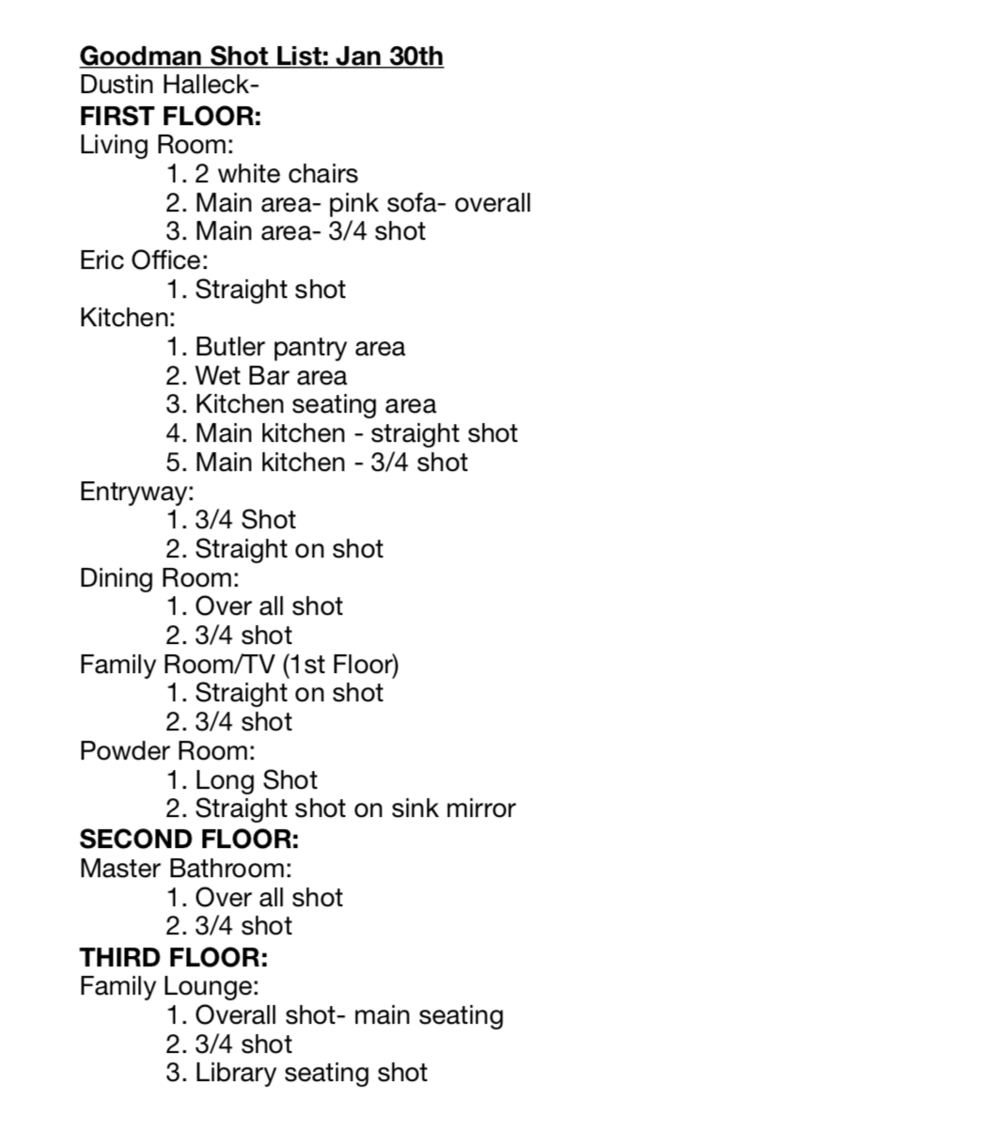
Example of Shot List
2. Make a list
Do your homework and determine which online or print publications would be the best fit for your style and current projects. Go out and purchase the print publications and make yourself familiar with their brand and look. One of the biggest turn offs for an editor is work pitched that clearly does not fit the publications brand.
Make a list of publication goals. Pick different ranges. Ones that are realistic and attainable and other that you set a goal for the future. Press helps get more press. Start with the “realistic” options to get things started.
3. Continue Research
Look up the editorial calendar for each publication. Most have a calendar for the year; what the content is and when content is due. This can help you strategically pitch at the right time for particular projects. Editorial calendars are about 3 months ahead. For example, if you have great pitch for a Spring Refresh feature, you should to reach out in January. You can do a google search for publications calendar.
Once you have created your list it will help you narrow down what to pitch and then look up the editor/s name that writes that section of the magazine. I have found that the Editor in Chief usually has final say in what makes it to print. They decide what content gets included. I would recommend sending the idea to the Editor in Chief and the Home editor.
Don’t forget the writers! A great angle to get your content to the editors is to track down the writer that consistently writes for the publication and email them directly. The writers pitch content all the time because it gives them first dibs on writing the piece and coming from them gives the pitch legitimacy. When a writer sends work to an editor its as if the work has been pre-screened. Chicago, for example, has two main writers that write all the local interiors features. Look up your local interiors magazine and look at who wrote the article then dig around for their contact information and reach out directly. These people often have an online presence and a simple Google search you can track them down.
To look up an editors email contact, look up the email formula. All companies have an email formula for all their employees. If you look up the editors name all you have to do is plug it into the formula. For example, Modern Luxury magazine email is the first initial of the first name + last name @modernluxury.com. If the editors name is Frank Smith the email with be [email protected]
Don’t forget the blogs. This is a great way to get your feet wet and get first press. Blogs and online content publications can be more receptive to the cold call approach.

Example of editorial calendar
4. Create or Buy a Media List
Editors and writers change quickly and it can be a challenge to keep an up-to-date media list. You can purchase a media list, which can save hours of research and updating the list. Amy Furry has a great list for purchase. Check out her blog Recipe for Press and interview on A Well Designed Business for more.
5. Develop Relationships
Once you get dialed in on an editor, continue to nurture that relationship. Editors are always looking for great content. I have sent editors chocolate gift baskets to get my work to stand out from the other submissions.
Be nice. Be persistent, but not pushing. Being over-barring is an immediate delete button from an editor.
Instagram is a great way to naturally build a relationship with any editor. Start to like and make genuine comments on their posts and it will help them take notice when you email them your pitch.
6. Be Well-Written
When drafting your email, keep it short and sweet. It’s a big turn off to editors if you waste their time with a bunch of pleasantries at the beginning of the email. Get to the point. They get hundreds of submissions and they will hit delete if you don’t get to point in the first couple sentences.
You can send a link to more work, but I have always had success with sending a couple images on a lower res page. Do not send high-res files. It will bog down their email and they will just delete it.
Don’t be afraid to follow up if you don’t hear anything back in a week or two. If you don’t hear anything back from the follow up email, they are not interested and move on.
Offer an exclusive. Editors love an exclusive and many will not print the work if it has been in a previous publication. I have offered an exclusive but have mentioned another editor is interested to not have them sit on it for too long. If you offer an exclusive, you have to give them proper time to consider before pitching it to another publication. Below are a couple examples of brief email pitch (these examples I had relationships with already):
7. Package it Smartly
Include a one pager. By just sending a link to your work you are trusting they will click on the link. I have sent a one-page PDF with a collection of images, giving a teaser of what the work looks like on my site. Connect the dots for them.
In my first pitch email I always include a brief paragraph of notable accolades for the editor to take notice. It could be other press, clients you have worked for, you are an expert in your field in a particular area. It should be a short elevator pitch. Include information on the project to make it easy for them. Believe it or not, the less work editors have to do and the more info that is spoon feed to them the more receptive they are. I recently had a scout for Domino reach out asking if we had any work that would fit a Fall Kids Spaces feature, this is the PDF I put together and sent him:
8. Network
Reach out to your network of friends and family, ask them directly if they know anyone that could help you get press. People generally want to help if they can. Leverage your relationships. It is ok to ask for help!
9. Keep at It!
Keep at it. Don’t get discouraged. It takes time. Lots of research and borderline internet stalking. Plan on at least 5 hours a month devoted to PR outreach.
Let the work speak for itself. If the work is good, they will eventually notice. Also not every project is document worthy, there are so many JTD projects that did not make the cut to invest in a photographer.
In the beginning, you do not need a PR person. PR companies are about $3k a month and a major investment. You can do it yourself. Also remember press does not equal new client intake. It is a bonus if you get a new client from a press feature. Press is more for bragging rights and legitimizing your creative work.
Good Luck! You got this! xo, Jen
